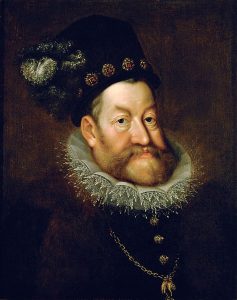Austria and Bohemian Lands
In the fifteenth century, the Jews were driven out of Vienna. A few families, however, continued to reside there illegally into the sixteenth century. Indeed, the community expanded markedly under Rudolf II (1576-1612). Although in 1624 Emperor Ferdinand II confined the Jews of Vienna to a ghetto, the community continued to grow. In 1648 it absorbed some of the refugees from the Chmielnitski massacres in Poland, including the renowned rabbinic scholar Shabbetai Sheftel Horowitz. But by the mid-seventeenth century, popular hostility drove Emperor Leopold I to expel the Jews once again from Vienna – the poorer Jews in 1669, and the wealthy, whose property was confiscated, the following year. However, in this period of state-building, the court’s need for services that Jews were best suited to provide led to the admission of a few “tolerated” Jews, who paid a large sum for the privilege of settling there with their households and employees. The wealthy court Jews who dominated the Vienna community, outstanding among them Samuel Oppenheimer and Samson Wertheimer, made Vienna a nerve-center for the Jews of the Habsburg lands.
In the early modern period, Habsburg Jewry was for all practical purposes confined to the three lands of the Bohemian Crown- Bohemia, Moravia, and Silesia. In those regions, as elsewhere in Central Europe, the sixteenth century brought hardships and expulsions, with a formal expulsion from the crown cities in 1541 (except for Prague, where a few families remained). By the end of the sixteenth century, half of Bohemian Jewry lived in Prague. In Moravia and Silesia, Jewish town life was supported by the activity of wealthy Jews who supplied war materials to rulers, developed industry and international trade, and became exposed to European culture. Much of the Jewish population, however, was scattered in rural towns and villages under the rule of local nobles, where they engaged in small-scale trade, supplying the local populace with manufactured goods and selling their agricultural produce.
Prague Jewry achieved a position of considerable importance in the latter part of the sixteenth century, particularly under the rule of Emperor Rudolf II, whose court was one of the most brilliant in Europe in supporting science and the arts. Prague’s Hebrew presses flourished, and its residents included number of outstanding scholars, among them R. Judah Loew b. Bezalel (Maharal) and David Gans. During the Thirty Years War (1618-48) and in its wake, however, the conditions of Jewish life declined throughout the Bohemian lands.
Secondary Sources
- Breuer, Mordechai. “Modernism and Traditionalism in 16th-c. Jewish Historiography- A Study of David Gans’ Tzemach David,” in Bernard Cooperman, ed., Jewish Thought in the Sixteenth Century, 49-88.
- Greenblatt, Rachel L. “The Shapes of Memory- Evidence in Stone from the Old Jewish Cemetery in Prague.” Leo Baeck Institute. Year Book 47 (2002)- 43-67. Abstract- Prague’s Jews from about 1575 to 1650 visited and were buried in that city’s Jewish cemetery. The changing design and decoration of gravestones during those years reveal how the community remembered and acknowledged the dead.
- Kieval, Hillel J. “Pursuing the Golem of Prague- Jewish Culture and the Invention of a Tradition.” Modern Judaism 17, no. 1 (1997)- 1-23.
What do you want to know?
Ask our AI widget and get answers from this website
